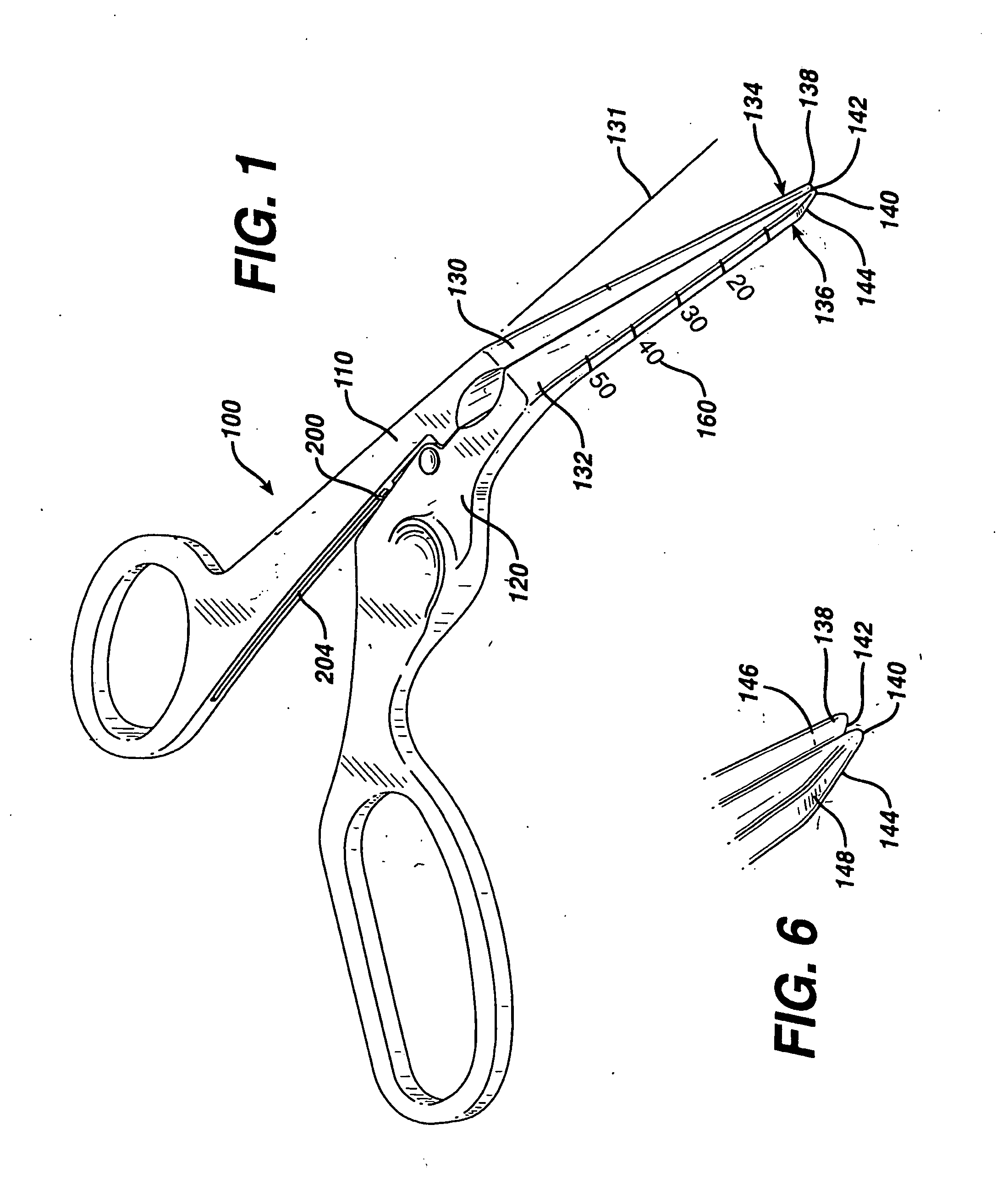Percutaneous access conduit and methods
a percutaneous access and conduit technology, applied in the field of medical procedures and instruments, can solve the problems of increased risk of arterial trauma and tearing of the vessel wall, increased risk of artery failure, and more difficult hemostasis at the end of the procedure, so as to reduce the bleeding
- Summary
- Abstract
- Description
- Claims
- Application Information
AI Technical Summary
Benefits of technology
Problems solved by technology
Method used
Image
Examples
Embodiment Construction
[0100] As shown in FIG. 1, a dissector / retractor tool is generally indicated at 100 and has 2 arms generally indicated at 110 and 120. The arms end in fingers 130 and 132 which are bent from the plane of the arms at an angle 131 of anywhere from 20 degrees to 80 degrees but preferably from 30 degrees to 45 degrees. The ends of the fingers 134 and 136, respectively on fingers 130 and 132 have points 138 and 140 which are pointed but not sharp and not rounded. The points are chamfered at the bottoms 142 and 144, respectively. The chamfer provides an angle which is supplementary to the angle of the fingers to provide a flat plane with the horizontal. Chines on the flat plane at the outside lower leading surface of the fingertips 146 and 148, respectively provide for a sharp bottom when the dissecting fingers are acting together.
[0101] As shown in FIG. 2, moving the arms of the dissector-retractor together will spread the fingers. The fingers of the dissector-retractor, as shown in FIG...
PUM
 Login to View More
Login to View More Abstract
Description
Claims
Application Information
 Login to View More
Login to View More - R&D
- Intellectual Property
- Life Sciences
- Materials
- Tech Scout
- Unparalleled Data Quality
- Higher Quality Content
- 60% Fewer Hallucinations
Browse by: Latest US Patents, China's latest patents, Technical Efficacy Thesaurus, Application Domain, Technology Topic, Popular Technical Reports.
© 2025 PatSnap. All rights reserved.Legal|Privacy policy|Modern Slavery Act Transparency Statement|Sitemap|About US| Contact US: help@patsnap.com



